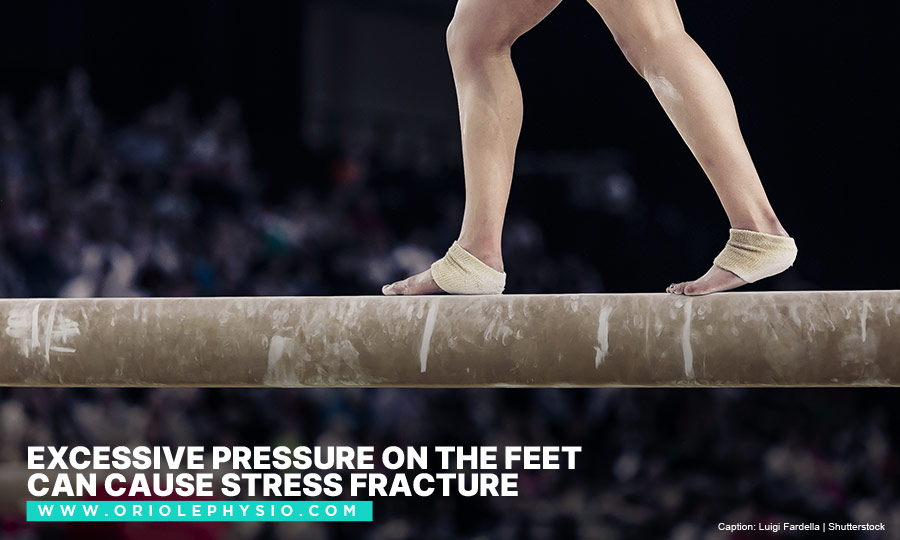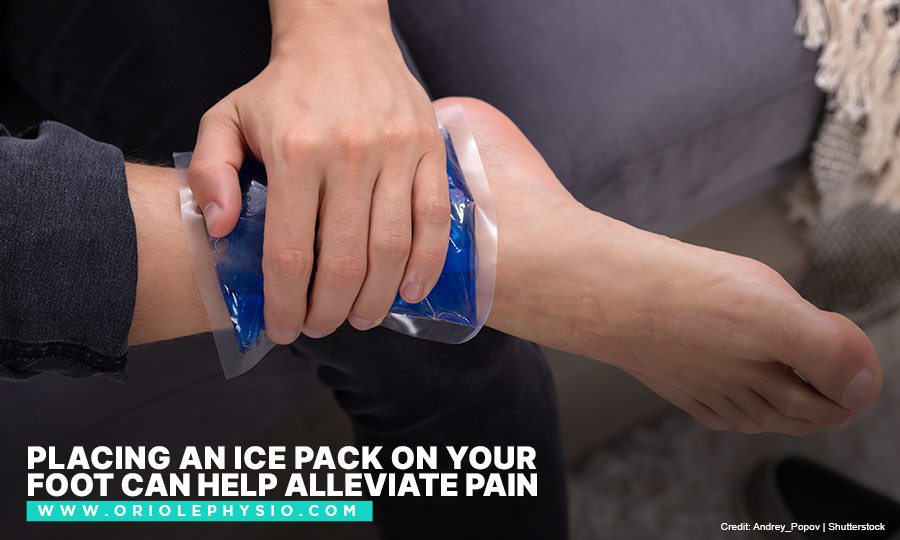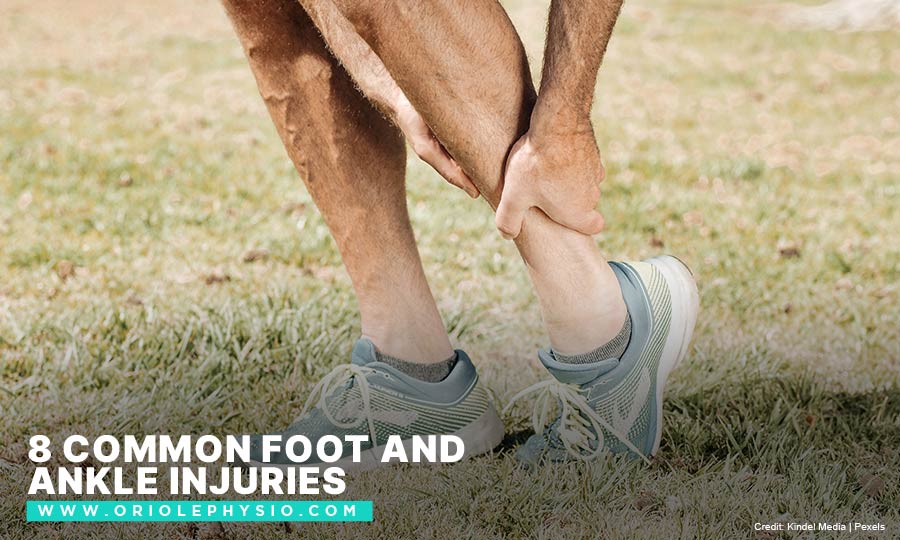8 Common Foot and Ankle Injuries
Your foot is a literal walking machine. A total of 26 bones, 33 joints, and over 100 tendons, muscles, and ligaments work together to carry your weight and get you through your everyday routine.
However, your foot is not without flaws. Injuries can occur either because of defects in the anatomy of your feet or after getting overwhelmed by external pressures. Sports, like running, basketball, soccer, football, and dancing, place considerable performance demands on the feet and are often associated with more foot and ankle injuries.
Here are 8 common foot and ankle problems:
- Achilles Tendinitis
Achilles tendinitis, which affects the Achilles tendon, is a frequent foot and ankle ailment. The tendon, like many musculoskeletal problems, can become thick, inflamed, bloated, or uncomfortable when asked to be used too much and too fast, such as after starting an ambitious exercise regimen. Calf muscle tension could also be a factor. The pain usually subsides after moving from a high-impact workout to a cross-training program that includes stretching and strengthening exercises for the calves, such as bike, elliptical, or swimming.
- Plantar Fasciitis
Plantar fasciitis is an inflammation of the fascia, the band of tissue that connects your toes to your heel on the sole of your foot. This occurs when the tissues that support the arch of your foot, absorb too much stress. High-impact sports, being overweight and doing occupations that require you to walk or stand on hard surfaces all raise your risk.
Plantar fasciitis is becoming more widespread, affecting 1 in 10 people at some point in their life according to the Canadian Certified Pedorthists. The majority of patients heal without surgery. Rest is also essential. Stretch your foot and calf often, and consider sleeping with a night splint to manage the ankle pain from plantar fasciitis.
- Bunions
When the joint linking your big toe to your foot slips out of place, a lump of bone and tissue grows at the base of your big toe. The majority of instances are caused by narrow-toed and high-heeled shoes, although genetics plays a minor part. Bunions can cause significant discomfort that makes it difficult to walk if left untreated. Treatments such as ice, over-the-counter footpads, and wearing shoes with bigger toe boxes can all help.
- Sesamoiditis
The sesamoids are 2 pea-shaped bones stuck in the tendon beneath the ball of your foot that aid in the regular movement of the big toe. It is one of the common foot injuries from walking. Running or even playing golf, for example, put a lot of force on the ball of the foot, which can cause injuries to the bones, tendons, and surrounding tissue. Anti-inflammatory medicines can help decrease pain and swelling by padding, strapping, or taping the foot to relieve pressure on the sesamoids.
- Stress Fractures

People who participate in activities such as running, basketball, tennis, gymnastics, and dancing are more likely to develop foot and ankle stress fractures due to the constant stress exerted on their feet and ankles. Fractured bones in the foot can also be caused by a lack of conditioning, correct equipment, or skill, which can disturb the mechanics of the foot and ankle.
Even a small, hairline fracture can potentially cause considerable pain. They can occur anywhere on your foot but often stress fractures in the metatarsal, or long toe bones, which are the most common locations. Rest allows your bones to mend, which takes 6 to 8 weeks on average.
- Ankle Sprain
Every day, about 25,000 people get an ankle sprain as a result of a fall, a step, or a twist. The ligaments on the outside of your ankle strain or rupture, producing discomfort, swelling, and occasionally the inability to bear weight. A sprained ankle, like other injuries, can be mild and cause a little discomfort, or it can be severe and make walking and standing difficult or unpleasant.
The most frequent type of ankle sprain is an inversion, which happens when bending the foot inward, stretching the outer ligaments, and causing injury. Eversion sprains, which occur when the foot is twisted outward, frequently result in more serious injury to the inside ankle ligaments.
- Neuroma
A neuroma, a disorder involving a pinched nerve in the foot, is frequently accompanied by symptoms such as pain in the ball of your foot, tingling, and numbness. The most common sign of a neuroma is pain between the toes while walking. Although there is no single explanation for neuromas, many factors can contribute to their development, including flat feet or high arches, overuse or stress, shoe size and style, and trauma. Inflammation, instability, and stress because of these issues may result in a neuroma.
Nonsurgical treatment is a common solution for many people. A few treatment options include finding more appropriate or supportive footwear, employing orthotic inserts, or corticosteroid injections to alleviate inflammation.
- Heel Spur
A heel spur is a calcium build-up on the heel bone that causes a bony protrusion. This problem may be more common in athletes who have flat feet or high arches. Running on hard surfaces, wearing the wrong shoes, being overweight or obese, walking with a stride that puts stress on the heel, and even diabetes are all factors that might contribute to heel pain. Heel spurs can produce excruciating discomfort in the rear foot, particularly when standing or walking.
Physical therapy, heel stretching exercises, orthotics, muscle and tendon tapping, and anti-inflammatory medication are used to treat the majority of persons with heel spurs that do not require surgery.
Remedies at Home

After a foot injury, you may not need to see a doctor. If your pain is moderate and you don’t have an infection, you can probably treat your injuries at home without any risk.
Follow these instructions when treating your foot at home:
- Rest — Avoid any activities, such as hiking, riding, and running, that put your foot under stress even if these activities are part of your normal, day-to-day routine.
- Ice — Apply ice or freeze packs to your foot several times during the day, for a total of 15 to 20 minutes each time.
- Medications — Over-the-counter pain relievers such as ibuprofen can help reduce swelling and pain.
- Protect and Support — Until your foot recovers, use a brace or bandage to protect and support it.
When to See a Doctor
Although many foot injuries heal on their own, some require prompt medical attention. If you have any of the following injuries, you should seek medical help immediately:
- severe to moderate pain
- difficulty walking
- swelling that persists 2 to 5 days after your accident
- bruising
- deformations in the foot or toes
- stinging, numbing, or burning sensation, particularly in the sole of your foot.
Go to the emergency hospital right away, if your foot:
- Has an open wound.
- Is filled with pus.
- Is bleeding.
- Has discolouration
If the skin around your injury is warm, red, or painful, you may have an infection. An infection can also be possible if you have been feeling dizzy, lightheaded, or feverish.
If you have experienced a foot or ankle injury and require immediate medical assistance or orthotics, visit Oriole Physiotherapy And Rehabilitation Centre Inc, a trusted foot clinic in North York. Call us at (416) 221-0772 today!



